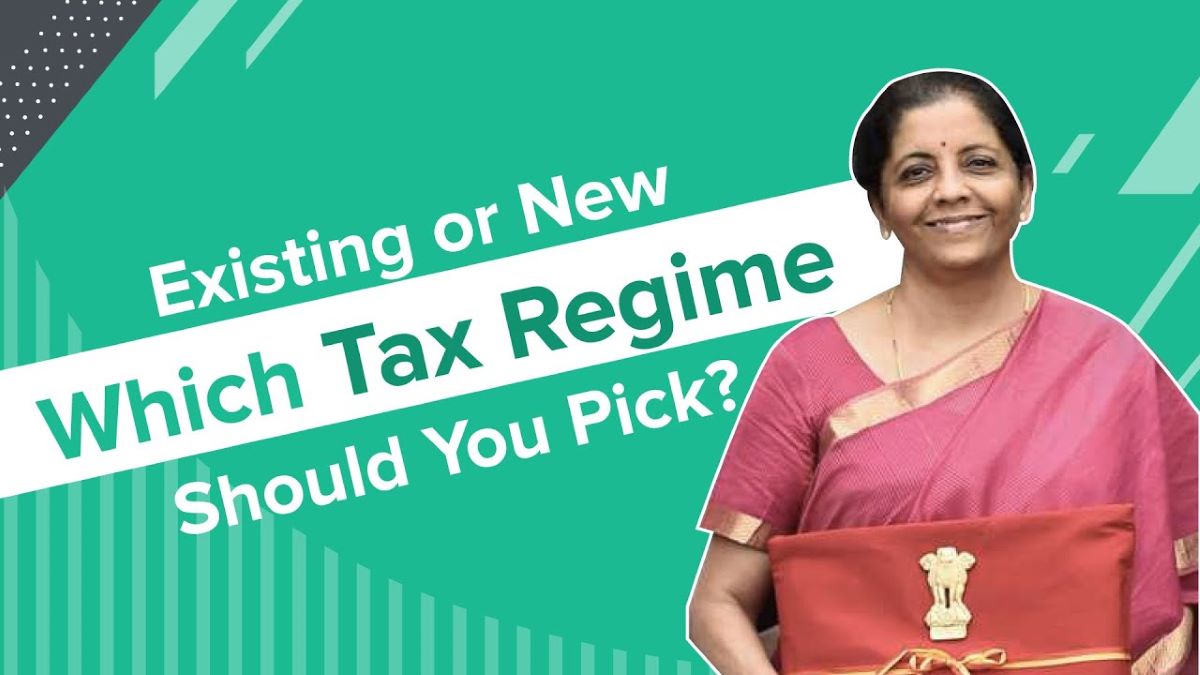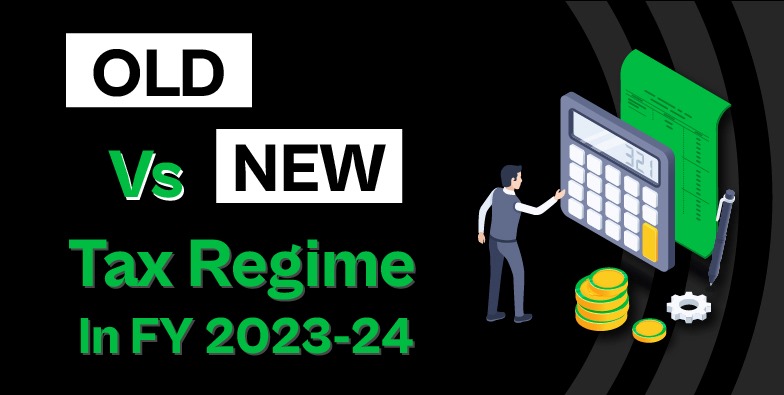
Check Credit Score for FREE
Instant in 2 Mins. No Impact on Credit Score

Difference Between Old and New Tax Regimes for FY 2025-26 (AY 2026-27)

The Indian Government levies income tax on taxpayers depending on their income level. It is applicable when taxpayers' income exceeds the basic exemption limit. However, our Government has revised the new income tax regime for the financial year 2025-26 and has declared it the default tax regime since April 1, 2023.
With the new income tax regime comes the confusion of which one to choose. The new regime is beneficial for some, and for some, the old one. Therefore, you must know everything about the old regime vs new regime.

Table of Contents

What are the Tax Rates in the New and Old Income Tax Regime?

The Union Government introduced new income tax slabs in the 2020 budget. The payable tax amounts in these slabs are lower than in the old tax slabs.
Nevertheless, this new tax regime removes some deductions and exemptions. Let’s compare the old and new tax regimes here.
Old vs. New Income Tax Slab Rates - FY 2025-26 (AY 2026-27)
The Union Budget of 2025 changed the slab rates in the new tax regime for FY 2025-26. So, here are the old vs new tax slab rates.
Income Tax Slabs For Individuals and HUF
Below is a table to elaborate on the old tax regime vs new tax regime for people below 60 and HUFs:
Income Tax Slab For Senior Citizens
The following table shows the new regime vs old regime slab rates for individuals aged above 60 years to 80 years for FY 2025-26.
Income Tax Slab For Super Senior Citizens
The table below shows the new tax regime vs old tax regime slab rates for individuals aged 80 and above for FY 2025-26.
Old vs. New Income Tax Slab Rates - FY 2024-25 (AY 2025-26)
Here are the old vs new tax slab rates for the new tax regime for FY 2024-25.
Income Tax Slabs For Individuals and HUF
Below is a table to elaborate on the old tax regime vs new tax regime slab rates for people below 60 and HUFs:
Income Tax Slab For Senior Citizens
The following table shows the new regime vs old regime slab rates for individuals aged above 60 years to 80 years for FY 2024-25.
Income Tax Slab For Super Senior Citizens
The table below shows the new tax regime vs old tax regime slab rates for individuals aged 80 and above.
Exemptions and Deductions in Old and New Income Tax Regimes
The meaning of “exemption” is that a taxpayer is unbound to pay tax up to a certain income level. At the same time, “Deduction” means debiting certain investments and expenses from a taxpayer’s income to calculate the taxable income.
These exemptions and deductions are not identical in new and old income tax regimes. The existing or old tax regime had 120 exemptions and deductions, most of which complicated the tax calculation. Therefore, the Ministry of Finance repealed 70, keeping 50 available.
The table below shows the comparison of exemptions available in the new tax regime and in the old tax regime for both FY 2024-25 and FY 2025-26:
Which is Better Old or New Tax Regime?
If you’re wondering, ‘Is the new tax regime better than the old?’ Then here’s a simplified old vs. new tax regime comparison done for you below.
Pros and Cons of Old Tax Regime
Pros and Cons of New Tax Regime
How to Choose Between the New and Old Income Tax Regime?
Taxpayers often wonder how to choose between old and new tax regimes. You must calculate your payable tax in both regimes to determine which is more beneficial. Below are some scenarios of individuals with different incomes and investments. The calculations compare new and old income tax slabs for FY 2025-26 for a particular income.
Scenario 1:
Annual income = ₹12,00,000
The expense for Life Insurance premiums (per annum) = ₹50,000
Contribution towards EPF (per annum) = ₹30,000
Here’s how to calculate the net taxable income as per both regimes based on the given numbers for FY 2025-26:
Calculation of Net Taxable Income - FY 2025-26 (AY 2026-27)
Now, let us calculate the income tax for both regimes:
So, in this scenario, choosing the new regime is a wise decision for the taxpayer.
Scenario 2:
This scenario shows the new versus old tax regime slab rate if the annual income is above ₹24 lakhs.
Annual income = ₹25,00,000
Expense for Life Insurance premiums (per annum) = ₹90,000
Contribution towards EPF (per annum) = ₹40,000
Here’s how to calculate the net taxable income as per both regimes if your income is ₹25 lakhs:
Calculation of Net Taxable Income - FY 2025-26
Now, let us calculate the income tax for both regimes:
Income Tax Calculation (Old Regime vs New Regime) - FY 2025-26
In this scenario, the new regime again becomes more beneficial for the taxpayer.
Thus, here is a final breakdown of calculations to help you choose the right income tax regime for FY 2025-26:
- Choose the new tax regime if your total deductions are ₹1.5 lakhs or less.
- Choose the old tax regime if your total deductions are more than ₹3.75 lakhs.
- If your total deductions are between ₹ 1.5 lakhs and ₹3.75 lakhs, choose the tax regime depending on your income level.
Hence, you must consider all your deductions and exemptions before choosing between the old and new income tax. After all exemptions and deductions under the old regime, calculate the net taxable amount. If it is lower than the amount under the new regime, choosing the old one is wise, and vice versa.













